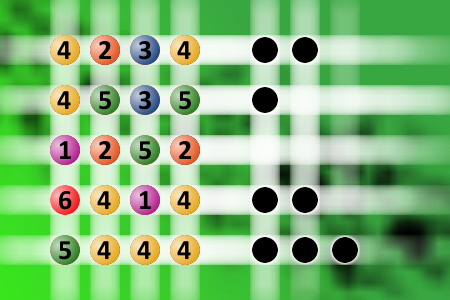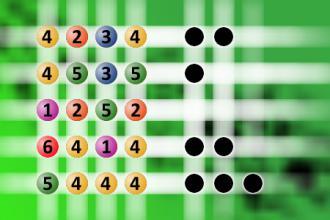What a winning combination?
The computer chose a secret code (sequence of 4 digits from 1 to 6). Your goal is to find that code. Black circles indicate the number of hits on the right spot. White circles indicate the number of hits on the wrong spot.Correct answers: 47
The first user who solved this task is Nílton Corrêa De Sousa.
#brainteasers #mastermind

The Devil
George Bush, Queen Elizabeth, and Vladimir Putin all die and go to hell.
While there, they spy a red phone and ask what the phone is for. The devil tells them it is for calling back to Earth.
Putin asks to call Russia and talks for 5 minutes. When he is finished the devil informs him that the cost is a million dollars, so Putin writes him a check.
Next Queen Elizabeth calls England and talks for 30 minutes. When she is finished the devil informs her that the cost is 6 million dollars, so she writes him a check.
Finally George Bush gets his turn and talks for 4 hours. When he is finished the devil informs him that the cost is $5.00.
When Putin hears this he goes ballistic and asks the devil why Bush got to call the USA so cheaply. The devil smiles and replies: "Since Obama took over, the country has gone to hell, so it's a local call."
While there, they spy a red phone and ask what the phone is for. The devil tells them it is for calling back to Earth.
Putin asks to call Russia and talks for 5 minutes. When he is finished the devil informs him that the cost is a million dollars, so Putin writes him a check.
Next Queen Elizabeth calls England and talks for 30 minutes. When she is finished the devil informs her that the cost is 6 million dollars, so she writes him a check.
Finally George Bush gets his turn and talks for 4 hours. When he is finished the devil informs him that the cost is $5.00.
When Putin hears this he goes ballistic and asks the devil why Bush got to call the USA so cheaply. The devil smiles and replies: "Since Obama took over, the country has gone to hell, so it's a local call."

